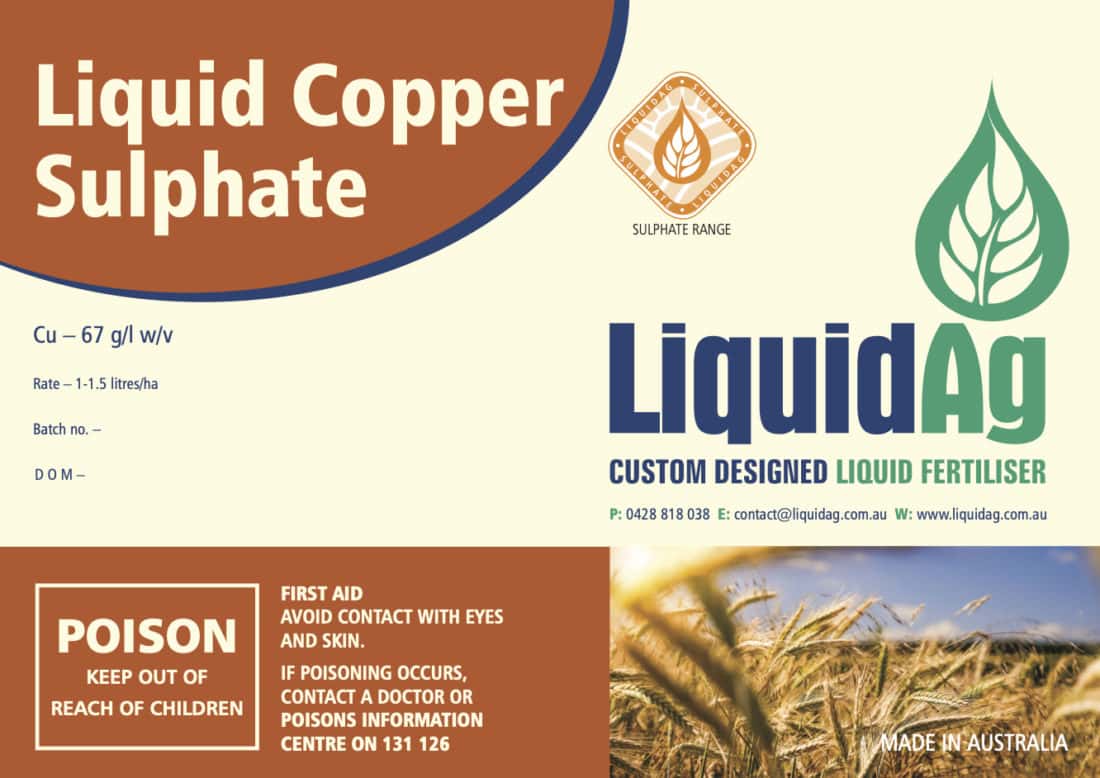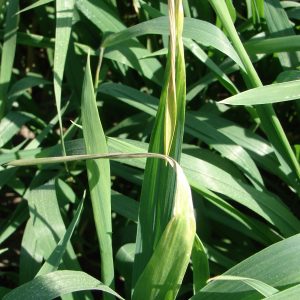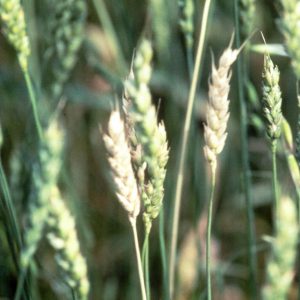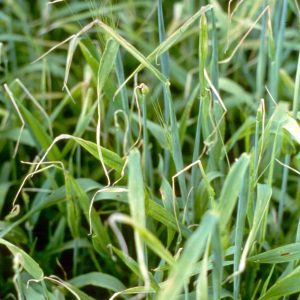Liquid Copper Sulphate

Directions for Use
Soil Injection
Copper can be applied as a soil surface spray where if sufficiently cultivated in would expect to last 5 years. Whilst only needed in small amounts, as an addition to a multi Trace element blend is can be very effective in meeting a crops demands. Soil applied copper can become unavailable in low pH soils, with metals such as Iron, Manganese and Aluminium effecting availability.
| Soil Injection | Rate (l/ha) | Water Rate (l/ha) | Comments |
|---|---|---|---|
| Soil Surface Spray | 6-8 litres/ha | - | Adequate soil incorporation |
| Furrow Injection | 1-3 litres/ha | 40-100 litres/ha | Under the seed |
Foliar Spray
Foliar sprays are the most effective way of correcting copper deficiencies. These can be applied in a multi nutrient blends at early to mid tillering on broad acre crops or if required right up to head emergence and flowering in cereals.
| Foliar Spray | Rate (l/ha) | Water rate (l/ha) | Comments |
|---|---|---|---|
| Cereals | 1-1.5 litres/ha | 70-100 litres/ha | Early tillering through to flowering |
| Canola | 1-1.5 litres/ha | 70-100 litres/ha | Adequate leaf area |
| Beans + Legumes | 1-1.5 litres/ha | 70-100 litres/ha | Adequate leaf area |
| Medic Pastures | 1-1.5 litres/ha | 70-100 litres/ha | Adequate leaf area |
Deficiency Symptoms
- Tip curl of the flag leaf in cereals
- Straw strength becomes weak below heads and darkening of the nodes can occur
- Leaves become weak and loose turgor and develop a bluish - grey/green shade prior to chlorosis
- Ears prematurely dying, white heads, poor seed set



